Happy Easter!
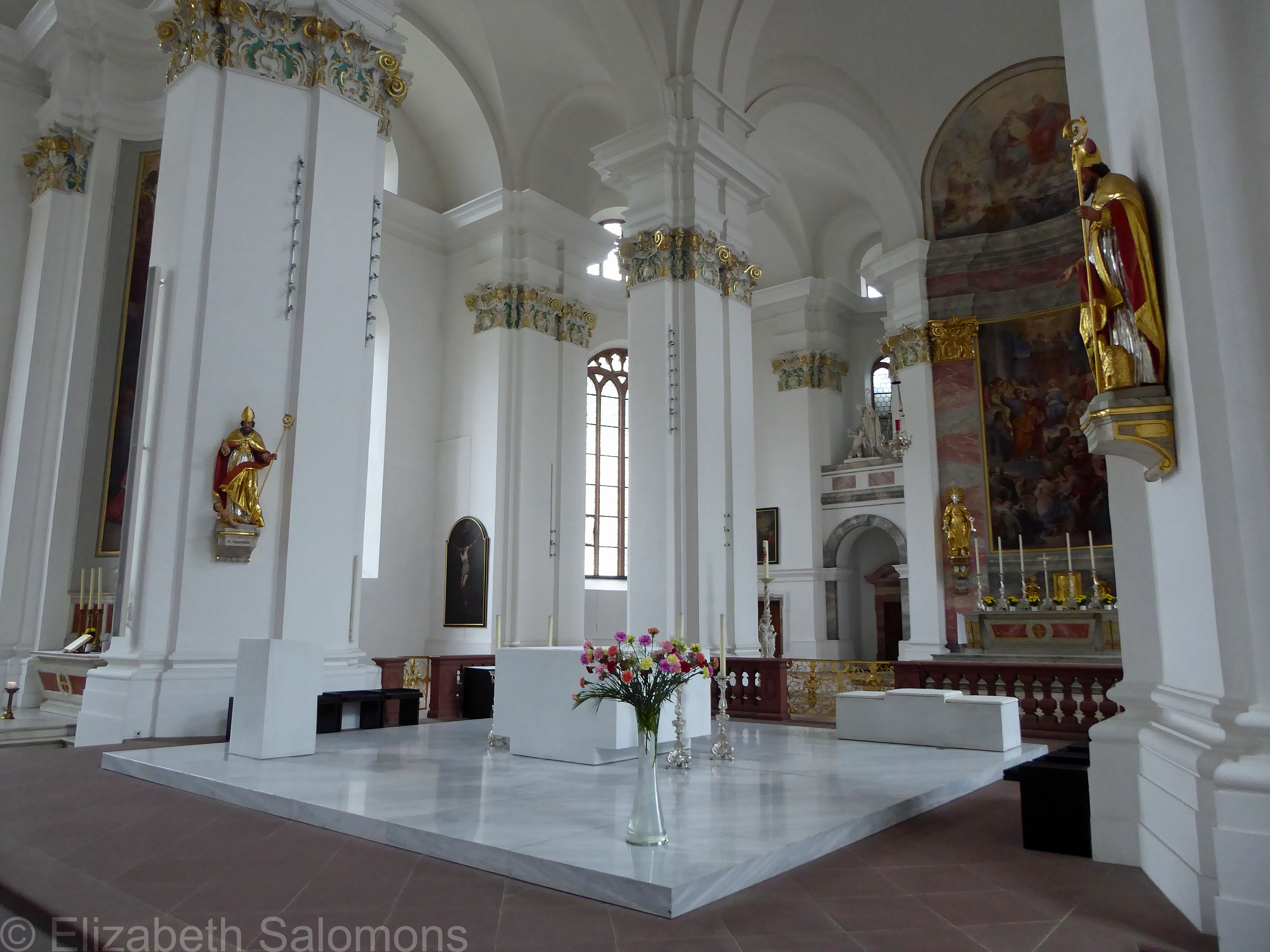
Jesuitenkirche, Heidelberg, September 2017
Through My Lens: Jesuitenkirche
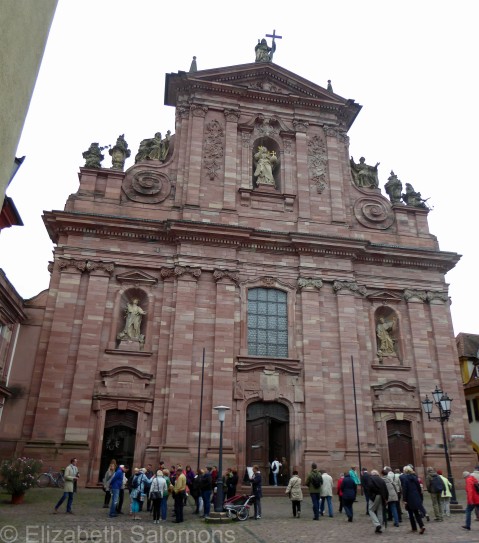
For the past two Sundays, I posted photos of the Protestant Church that stands over the Old Town of Heidelberg. For today, Palm Sunday, I’m posting a photo of the Catholic Church that stands in the centre of Heidelberg’s Old Town. That would be the Jesuitenkirche (Jesuit Church).
This church, built in the Baroque style, was constructed in fits and starts throughout the eighteenth century. The Jesuits began the process in 1712, with the Elector Palatine at the time, Johann Wilhelm II, donating the land. The stone came from the Heidelberg Castle and the lumber from nearby forests. A bell tower (not seen in this photo) was added at the end of the nineteenth century.
After the Jesuit order was abolished in 1773, the church was taken over by the Lazarists. It later served as a hospital before eventually becoming the parish church of the local Catholic community in 1809.
Through My Lens: Inside the Heiliggeistkirche
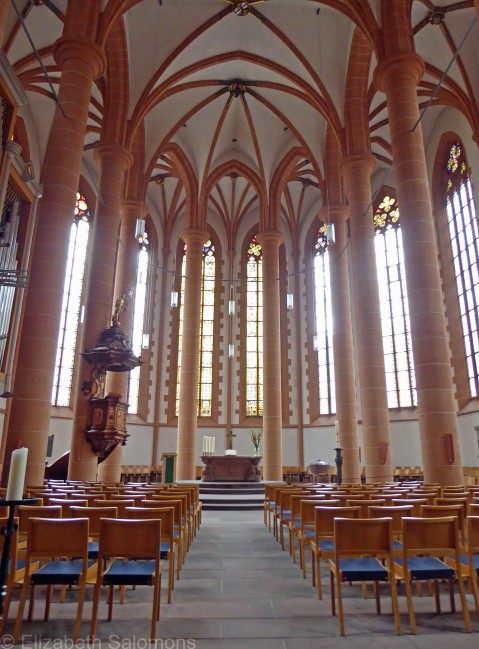
Last week I posted a photo of the Heiliggeistkirche in Heidelberg and today, for the Fifth Sunday of Lent, I’m posting a photo of what it looks like on the inside. That pink sandstone you see is from the Neckar Valley; it was used to build much of Heidelberg’s Old Town.
Like many churches in northern Europe, the Heiliggeistkirche was originally Roman Catholic. Today it is Protestant, but for much of its history, a wall divided the nave from the chancel and a second altar was built in the centre of the church. That way, the church could accommodate both Catholic and Protestant worshippers. The wall was not removed until 1936.
Through My Lens: Heiliggeistkirche
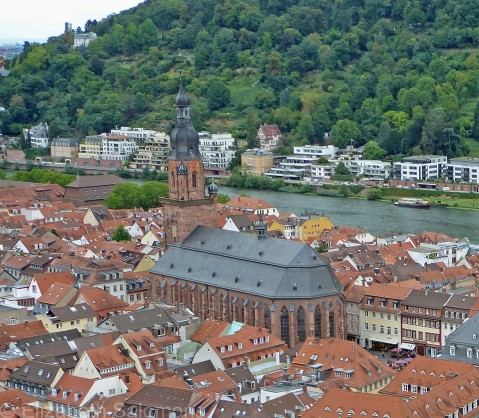
It’s the Fourth Sunday of Lent, and we’re moving on to Heidelberg. The skyline of this city in the Neckar Valley would not be the same without the Heiliggeistkirche (Church of the Holy Spirit). Built in the fifteenth century, this Romanesque and Gothic church is the largest in Heidelberg and stands high above the Old Town. It is one of the most-visited churches in Germany.
Through My Lens: Schlosskirche
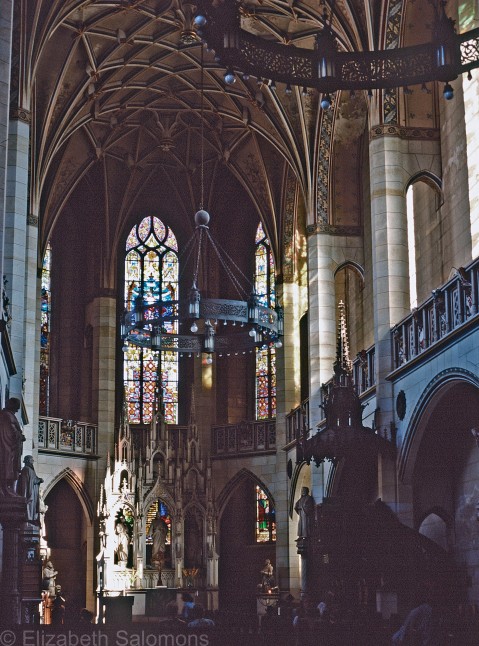
For the Third Sunday of Lent, I’m posting a photo from inside the Schlosskirche (Castle Church) in Wittenberg. I’ve written about this church before, in connection with that revolutionary–reformer, Martin Luther.
A chapel has stood on this site since 1340. Between 1490 and 1511, a church in the Late Gothic style was built, attached to the castle just beside it. (Hence, the name.) That castle was the home of Frederick III, Elector of Saxony at the time. Both Frederick (also known as Frederick the Wise) and Martin Luther are buried in the church.
The Schlosskirche was destroyed during the Seven Years’ War in 1760, but later rebuilt. The doors that memorialize Martin Luther’s 95 theses were dedicated in 1858 and the church has been on the UNESCO World Heritage List since 1996.
Through My Lens: Kaiser-Wilhelm-Gedächtniskirche
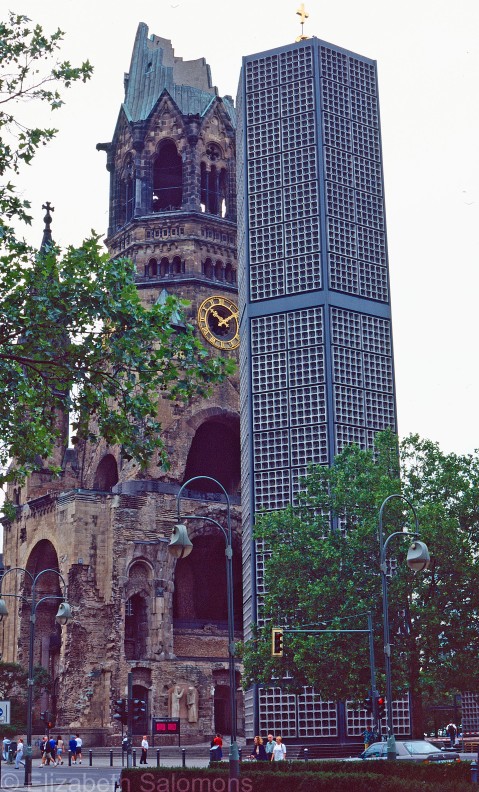
Fourteen years after my first visit to Germany, I was back. Once again, I was hopping on and off trains, but this time I was on a European walkabout with my dad.
Two significant events took place between my first two trips to Germany. The first was the fall of the Berlin Wall and the second was the reunification of Germany. My dad and I stopped for just two nights in Berlin, so my impressions of the city are fleeting, but one image stayed with me. That would be the long line of construction cranes where a string of building projects were madly underway to fill the space where the Wall used to exist.
Another image that struck me was the Kaiser-Wilhelm-Gedächtniskirche (Kaiser Wilhelm Memorial Church), located in the centre of what used to be West Berlin. A church was first built on this site in the late nineteenth century. The kaiser at the time, Wilhelm II, named the Neo-Romanesque building after his grandfather, Kaiser Wilhelm I.
After being badly damaged during World War II, a new church was constructed, but the remnants of the original building were left as a memorial to the devastation of war. The photo above shows the original spire behind the bell tower of the new church.
The Kaiser-Wilhelm-Gedächtniskirche is my photo choice for today, the Second Sunday of Lent.
Through My Lens: Kölner Dom

A lifetime ago, when I was planning my first European walkabout, I went to a travel agent (remember those?) and came home with a bunch of pamphlets from those companies that offer multi-week tours of Europe. My travel partner and I were not in any way interested in joining an organized tour, but I did want to have in my head some kind of rough itinerary before we left Canada and started hopping on and off trains.
As I flipped through the pamphlets, I came across a photo of the Kölner Dom (Cologne Cathedral) from across the Rijn River, similar to the photo shown above. What a stunning cathedral, I thought. I have to see it in person. (This would not be the only time I made a choice regarding travel based solely on a single photo, but it may have been the first.)
It turned out that passing through Cologne was already in the works. My friend and I had agreed to plan our time in Germany around a two-day Rijn cruise included with our Eurail pass, and that cruise began in Cologne.
As you see, I got my photo.
Construction of the Kölner Dom began in 1248 but wasn’t completed until 1880, due to a several-centuries’ long stoppage of the building work. This Gothic cathedral is the tallest twin-spired church in the world. My friend and I climbed one of those spires and though my knees were protesting for days afterwards, I remember that the climb gave us a bird’s-eye view of some of the damage the cathedral suffered during World War II. I later learned that the city of Cologne was pretty much flattened; only the cathedral (miraculously) survived the bombardments. It is now on the UNESCO World Heritage List.
I took you on a tour of the Aachener Dom for last year’s Lenten series. This year, I’m staying in Germany, and the Kölner Dom is my photo choice for today, the First Sunday of Lent.
Happy Easter!

Aachener Dom, Aachen, September 2017
Through My Lens: Aachener Dom Pulpit

I’m by no means a short person, so judging by the angle from which I took this photo, my best guess is this pulpit is at least ten feet off the floor of the Aachener Dom. Quite an imposing perch from which to preach a sermon or read from the gospels.
The pulpit is sometimes referred to as the Ambon of Henry II. Ambon simply means pulpit. Henry II was another of the Holy Roman Emperors, who ruled from 1014 to 1024, some two hundred years after Charlemagne.
The pulpit is just to the right of the altar of the Aachener Dom and is my photo choice for today, Palm Sunday.
Through My Lens: Behind the Altar of the Aachener Dom

Last Sunday I showed you a photo of the altarpiece of the Aachener Dom, and mentioned that the shrine containing the remains of Charlemagne was somewhere behind that altarpiece.
Here then, for the Fifth Sunday of Lent, is a view of the area behind the altar, and in the far distance of this photo, beneath the stained glass windows, is the Karlsschrein.
